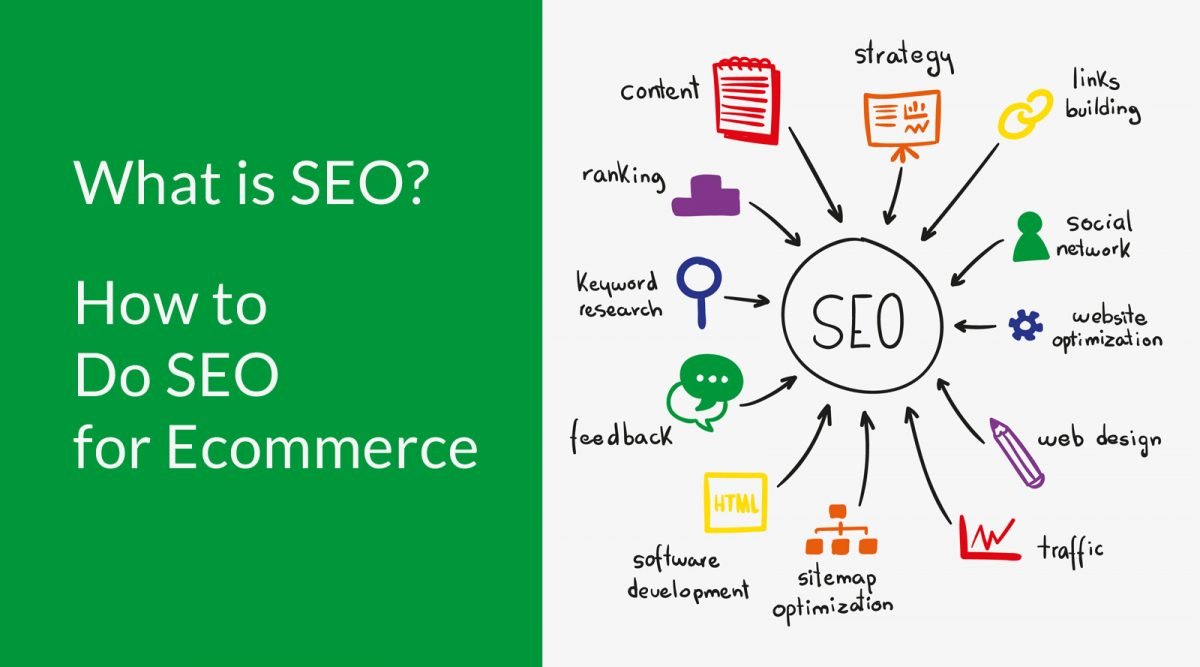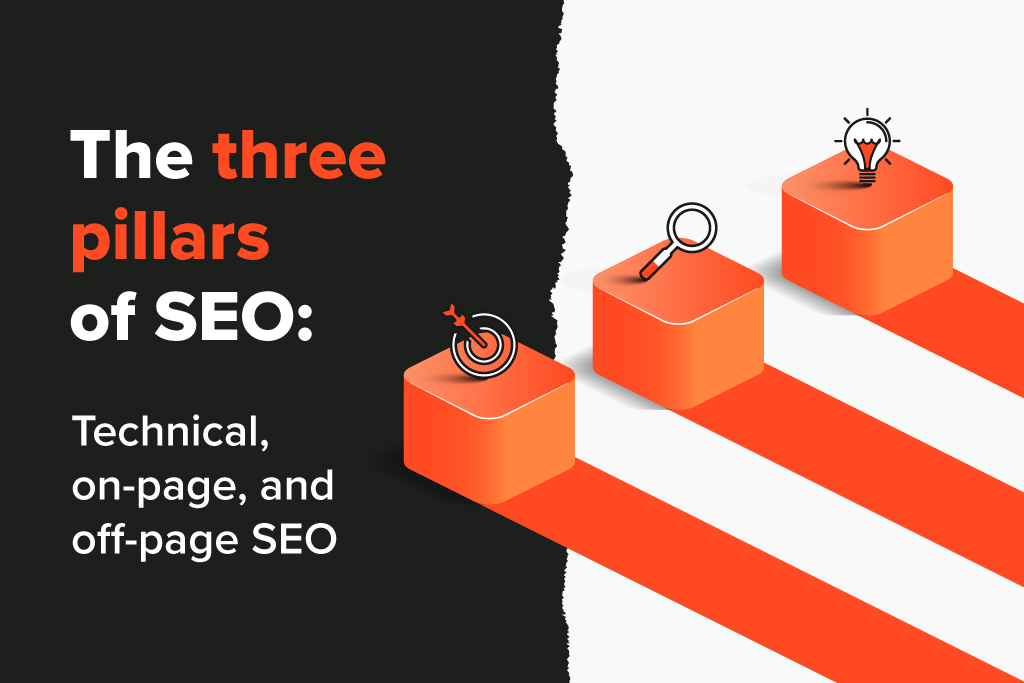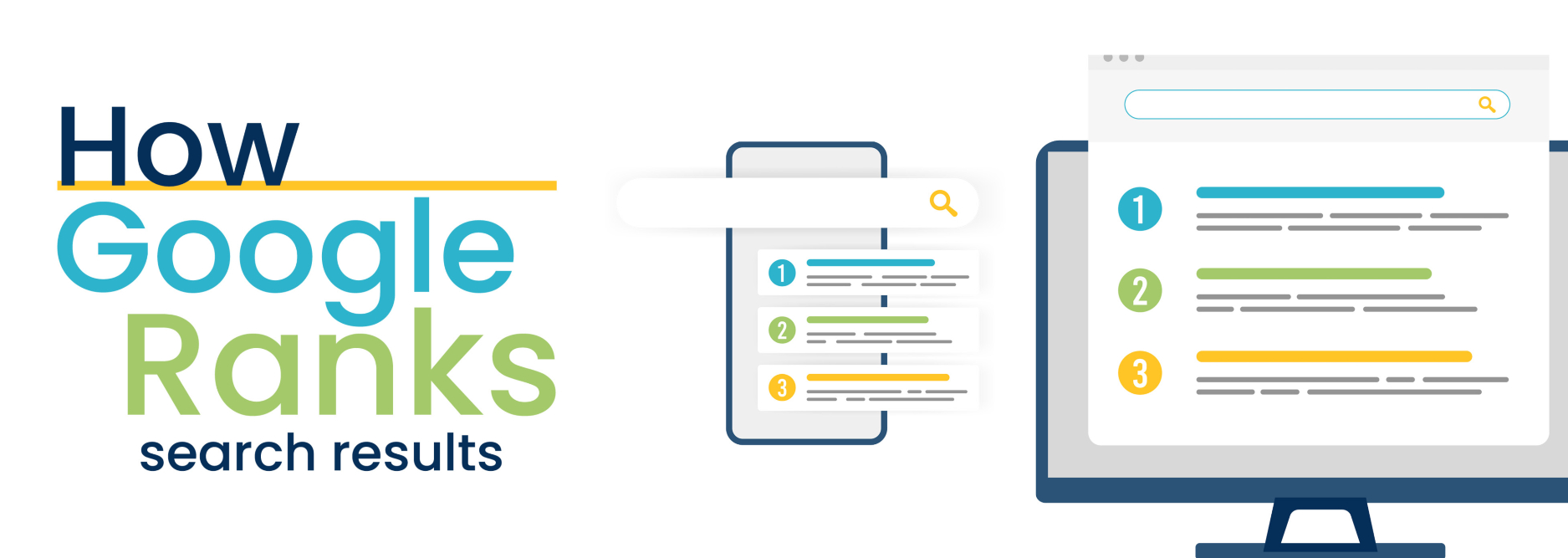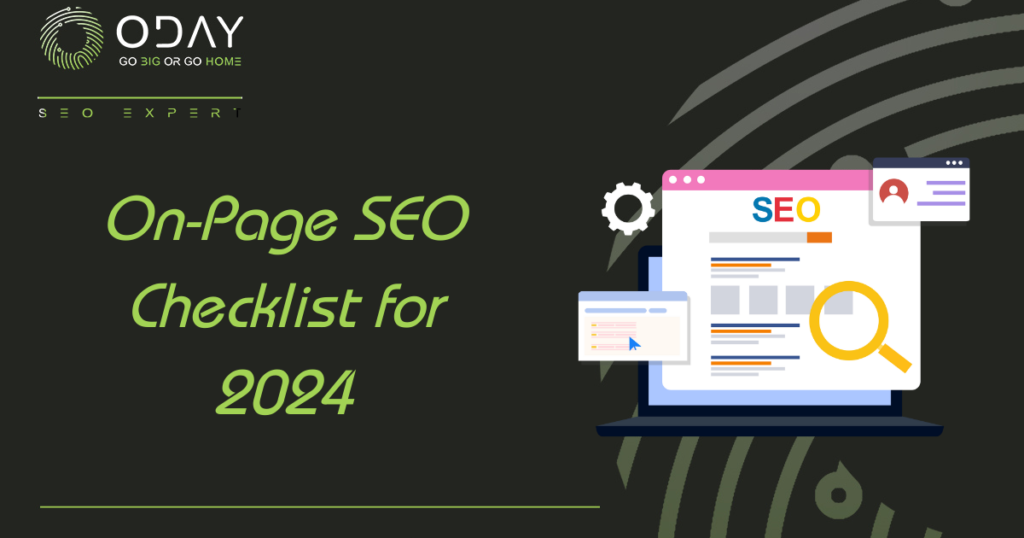Are you eager to demystify the world of Search Engine Optimization (SEO) and uncover its potential to transform your online presence?
In today’s digital landscape, understanding “What is SEO” isn’t just beneficial—it’s imperative.
Whether you’re a seasoned marketer seeking to refine your strategies or a newcomer navigating the complexities of search algorithms, this comprehensive guide is your pathway to success.
In this article, we embark on a journey through the dynamic realm of SEO, unraveling its mysteries and equipping you with the knowledge and tools to thrive in the digital age.
From mastering the foundational principles of technical optimization to embracing the cutting-edge innovations of AI-driven SEO, we explore every facet of this dynamic field.
What is SEO?
SEO, or Search Engine Optimization, lies at the heart of digital marketing strategies aimed at enhancing online visibility and driving organic traffic to websites.
In essence, SEO involves a series of tactics and best practices designed to optimize a website’s content, structure, and authority in a way that aligns with search engine algorithms.
At its core, SEO revolves around the fundamental principle of understanding and catering to user intent. Search engines like Google, Bing, and Yahoo utilize complex algorithms to deliver the most relevant and valuable results to users based on their search queries.
By aligning your website’s content with the needs and preferences of your target audience, you can improve its visibility and ranking in search engine results pages (SERPs).
SEO encompasses various elements, including:
- On-Page Optimization: This involves optimizing individual web pages to improve their relevance and visibility for specific keywords. On-page optimization includes optimizing meta tags, headings, and content, as well as ensuring a website’s structure is user-friendly and accessible.
- Off-Page Optimization: Off-page optimization focuses on building the authority and credibility of a website through external factors such as backlinks, social signals, and online mentions. Building high-quality backlinks from reputable websites is a crucial aspect of off-page SEO.
- Technical Optimization: Technical optimization involves optimizing the technical aspects of a website to improve its crawlability, indexability, and overall performance. This includes optimizing site speed, fixing crawl errors, and implementing structured data markup.
- Content Creation: Content lies at the heart of SEO, as search engines prioritize websites that offer valuable, informative, and engaging content. Creating high-quality content that addresses the needs and interests of your target audience is essential for SEO success.
- User Experience (UX): User experience plays a significant role in SEO, as search engines prioritize websites that offer a seamless and intuitive user experience. This includes factors such as page load speed, mobile-friendliness, and navigation ease.
In summary, SEO is a multifaceted discipline that requires a strategic approach and ongoing optimization efforts.
By understanding and implementing the core principles of SEO, businesses can enhance their online visibility, attract qualified traffic, and ultimately drive conversions and revenue.
The Three Pillars of SEO
Search Engine Optimization (SEO) operates on a foundation built upon three core pillars, each crucial for achieving online visibility, attracting organic traffic, and improving search engine rankings. Understanding and optimizing these pillars are fundamental to any successful SEO strategy.
- Technical Optimization: Technical optimization forms the backbone of SEO, focusing on the technical aspects of a website that affect its visibility to search engines. This pillar involves ensuring that search engine crawlers can effectively access, crawl, and index your website’s content. Key elements of technical optimization include:
- Site Speed: A fast-loading website is essential for providing a positive user experience and can impact search engine rankings.
- Mobile-Friendliness: With the increasing prevalence of mobile devices, optimizing your website for mobile ensures accessibility across all devices and improves rankings in mobile search results.
- Indexability: Ensuring that search engines can index all relevant pages of your website by utilizing techniques such as XML sitemaps, robots.txt files, and canonical tags.
- Site Structure: Creating a logical site structure with clear navigation helps search engines understand the organization of your content and improves user experience.
- On-Page Optimization: On-page optimization focuses on optimizing individual web pages to enhance their relevance and visibility for specific target keywords. This pillar involves optimizing various on-page elements to align with user intent and search engine algorithms. Key components of on-page optimization include:
- Keyword Research: Identifying relevant keywords that your target audience uses to search for information related to your business or industry.
- Content Optimization: Creating high-quality, informative, and engaging content that incorporates target keywords naturally and provides value to users.
- Meta Tags: Optimizing meta titles, meta descriptions, and header tags to accurately reflect the content of each page and improve click-through rates in search results.
- URL Structure: Creating user-friendly URLs that are descriptive and contain target keywords to enhance both user experience and search engine visibility.
- Off-Page Optimization: Off-page optimization focuses on building the authority, credibility, and reputation of a website through external factors such as backlinks, social signals, and online mentions. This pillar plays a critical role in determining a website’s trustworthiness and relevance in the eyes of search engines. Key aspects of off-page optimization include:
- Link Building: Acquiring high-quality backlinks from reputable websites through strategies such as guest blogging, influencer outreach, and content promotion.
- Social Media Engagement: Building a strong presence on social media platforms and engaging with your audience to increase brand visibility and attract traffic to your website.
- Online Reputation Management: Monitoring and managing online reviews, mentions, and discussions to maintain a positive brand image and authority in your industry.
By understanding and optimizing each of these three pillars of SEO, businesses can establish a solid foundation for improving their search engine rankings, driving organic traffic, and achieving long-term success in the competitive online landscape.
Paid Search vs. Organic Search
Paid Search: Paid search, also known as Pay-Per-Click (PPC) advertising, involves bidding on keywords to display advertisements prominently in search engine results pages (SERPs).
These ads are typically labeled as “sponsored” or “ad” and appear above or alongside organic search results.
Here’s a closer look at the key characteristics of paid search:
- Positioning: Paid search ads appear prominently at the top of SERPs, above organic search results, making them immediately visible to users.
- Immediate Results: With paid search, businesses can quickly generate traffic to their website and increase visibility for specific keywords, leading to instant results.
- Cost: Paid search operates on a pay-per-click model, where advertisers only pay when users click on their ads. While this offers control over budget allocation, costs can escalate quickly, especially for competitive keywords.
- Flexibility: Paid search campaigns offer granular control over targeting options, allowing advertisers to tailor their ads based on factors such as location, demographics, and device.
- Ad Content: Advertisers have control over the content and messaging of their paid search ads, enabling them to optimize for conversions and user engagement.
Organic Search: Organic search refers to the natural, unpaid listings that appear in SERPs based on their relevance to a user’s search query.
Unlike paid search, organic search results are determined algorithmically by search engines and are influenced by various factors.
Here are some key aspects of organic search:
- Positioning: Organic search results appear below paid ads in SERPs and are ranked based on their perceived relevance and authority.
- Long-Term Strategy: Achieving high rankings in organic search requires a long-term commitment to optimizing website content, improving user experience, and building authority through backlinks.
- Cost: While organic search does not involve direct payment for clicks, it requires investments in time, resources, and expertise to optimize content, implement technical SEO, and earn backlinks.
- Credibility: Organic search results are perceived as more credible and trustworthy by users since they are not influenced by advertising spend.
- Sustainability: Once established, organic search rankings can provide sustained traffic and visibility over time, without the ongoing investment required for paid search campaigns.
How Do Search Engines Work?
Search engines play a fundamental role in navigating the vast expanse of information available on the internet, helping users find relevant and valuable content in response to their queries. Understanding how search engines work is essential for digital marketers, website owners, and anyone seeking to improve their online visibility. Here’s an overview of the inner workings of search engines:
1. Crawling: The process begins with search engine crawlers, also known as bots or spiders, which systematically browse the web to discover and index web pages. These crawlers follow links from one webpage to another, collecting information about each page they encounter. Through this continuous crawling process, search engines discover new content and update their index with fresh information.
2. Indexing: Once a webpage is crawled, the search engine evaluates its content and stores relevant data in its index, a vast database of web pages and their associated information. Indexing involves analyzing various elements of a webpage, including text, images, meta tags, and links, to determine its relevance to specific search queries. The indexed pages are then ranked based on their perceived relevance and quality.
3. Ranking: When a user enters a search query, the search engine retrieves relevant pages from its index and ranks them based on a complex algorithm. This algorithm considers numerous factors to determine the most appropriate results for the user’s query, including:
- Relevance: The extent to which a webpage’s content matches the user’s search intent and keywords.
- Authority: The credibility and trustworthiness of the webpage, often measured by the quantity and quality of inbound links from other reputable sites.
- User Experience: Factors such as page loading speed, mobile-friendliness, and overall usability contribute to a positive user experience and may influence rankings.
4. Retrieval and Display: Finally, the search engine displays the ranked results to the user, typically in the form of a list of links accompanied by brief snippets of text (known as snippets) that provide context for each result. The user can then review the results and click on the links that best meet their needs.
Optimizing for Search Engines: Understanding the inner workings of search engines is crucial for optimizing web content to improve visibility and rankings. By adhering to best practices in search engine optimization (SEO), website owners and marketers can enhance their chances of appearing prominently in search results. SEO techniques include:
- Keyword Optimization: Incorporating relevant keywords into webpage content, titles, meta tags, and headings to improve relevance and visibility for targeted search queries.
- Content Quality: Creating high-quality, informative, and engaging content that addresses user needs and provides value.
- Technical Optimization: Ensuring that web pages are accessible, crawlable, and optimized for performance, including factors such as site speed, mobile responsiveness, and structured data markup.
- Link Building: Earning inbound links from authoritative and relevant websites to demonstrate credibility and authority to search engines.
How Does Google Order and Rank Search Results?
Google, being the most widely used search engine, employs sophisticated algorithms to organize and prioritize search results in response to user queries. Understanding how Google orders and ranks search results is essential for digital marketers and website owners seeking to improve their online visibility. Here’s an overview of the key factors influencing Google’s search rankings:
1. Relevance: Google aims to deliver search results that are most relevant to the user’s query. To determine relevance, Google analyzes various factors, including the presence of the search terms (keywords) in the webpage’s content, title, meta tags, headings, and URL. Pages that closely match the user’s search intent are considered more relevant and are likely to rank higher in search results.
2. Authority: In addition to relevance, Google evaluates the authority and credibility of web pages to ensure high-quality search results. Authority is often determined by the quantity and quality of inbound links (backlinks) from other reputable websites. Pages with a strong backlink profile, indicating endorsements from trusted sources, are deemed more authoritative and are given preference in rankings.
3. User Experience: Google prioritizes web pages that offer a positive user experience, as reflected in factors such as page loading speed, mobile-friendliness, and overall usability. Pages that load quickly, display properly on mobile devices, and provide a seamless browsing experience are more likely to rank higher in search results.
4. Content Quality: High-quality content that is informative, relevant, and engaging is favored by Google’s algorithms. Content that addresses user needs, provides valuable insights, and demonstrates expertise, authority, and trustworthiness (E-A-T) is more likely to rank well. Google also rewards fresh, original content that adds value to the user experience.
5. User Engagement: Google considers user engagement metrics as signals of content quality and relevance. Metrics such as click-through rate (CTR), dwell time (the amount of time users spend on a page), and bounce rate (the percentage of users who leave a site after viewing only one page) help Google assess the relevance and usefulness of search results. Pages with higher engagement metrics are typically ranked higher.
6. Search Intent: Understanding the user’s search intent is crucial for delivering relevant search results. Google’s algorithms analyze the context of the search query and aim to provide results that best match the user’s intent, whether it’s informational, navigational, transactional, or commercial. Tailoring content to align with different search intents can improve visibility and rankings.
7. Algorithm Updates: Google regularly updates its algorithms to improve the relevance, accuracy, and quality of search results. Major algorithm updates, such as Google Panda, Google Penguin, and Google RankBrain, can significantly impact search rankings by adjusting the importance of various ranking factors or introducing new criteria. Staying informed about algorithm updates and adapting SEO strategies accordingly is essential for maintaining search visibility.
What Is an SEO Strategy?
An SEO strategy is a comprehensive plan of action aimed at optimizing a website’s visibility and performance in search engine results pages (SERPs). It involves strategic planning, implementation, and ongoing optimization to improve organic search rankings, drive targeted traffic, and achieve specific business objectives. Here’s a closer look at the key components and importance of an effective SEO strategy:
1. Goal Setting: The first step in developing an SEO strategy is to define clear and measurable goals that align with your overall business objectives. Whether it’s increasing website traffic, improving keyword rankings, boosting conversion rates, or enhancing brand visibility, setting specific goals provides direction and helps measure the success of your SEO efforts.
2. Audience Research and Keyword Analysis: Understanding your target audience and their search behavior is crucial for developing an effective SEO strategy. Conducting thorough audience research and keyword analysis helps identify relevant search queries, topics of interest, and areas of opportunity. By targeting the right keywords and topics, you can create content that resonates with your audience and attracts organic traffic.
3. On-Page Optimization: On-page optimization involves optimizing various elements within your website to improve its visibility and relevance to search engines. This includes optimizing meta titles and descriptions, headers, URLs, and image alt tags, as well as improving internal linking structure and ensuring mobile-friendliness and page loading speed. By optimizing on-page elements, you can enhance the crawlability, indexability, and overall quality of your website.
4. Content Strategy: Content plays a crucial role in SEO, serving as the foundation for attracting organic traffic and engaging with your audience. A solid content strategy involves creating high-quality, relevant, and valuable content that addresses user needs, answers common questions, and provides solutions to their problems. By producing informative blog posts, articles, guides, videos, infographics, and other types of content, you can establish authority, build trust, and improve search rankings.
5. Off-Page Optimization: Off-page optimization refers to activities conducted outside of your website to improve its authority, credibility, and relevance in the eyes of search engines. This includes building high-quality backlinks from authoritative websites, earning positive reviews and mentions, and engaging with relevant communities and influencers. Off-page optimization helps boost your website’s visibility, authority, and trustworthiness, leading to higher search rankings.
6. Technical SEO: Technical SEO focuses on optimizing the technical aspects of your website to improve its performance and accessibility for search engines. This includes optimizing site structure and navigation, fixing crawl errors, implementing schema markup, improving site speed and mobile responsiveness, and ensuring proper indexing and sitemap submission. By addressing technical issues and ensuring a smooth user experience, you can enhance your website’s search visibility and rankings.
7. Performance Monitoring and Optimization: An effective SEO strategy involves continuous monitoring and optimization to track progress, identify opportunities, and address any issues that may arise. By analyzing key performance metrics such as organic traffic, keyword rankings, backlink profile, and conversion rates, you can measure the effectiveness of your SEO efforts and make data-driven decisions to improve results over time.
How to Become an SEO Expert
Becoming an SEO expert requires dedication, continuous learning, and hands-on experience. Here’s a brief overview of the steps you can take to become proficient in SEO:
- Educate Yourself: Start by learning the fundamentals of SEO through online courses, tutorials, blogs, and reputable resources. Familiarize yourself with key concepts such as keyword research, on-page optimization, link building, and technical SEO.
- Gain Practical Experience: Apply your knowledge by working on real-world SEO projects. Start with your own website or blog, and gradually take on freelance projects or internships to gain hands-on experience in optimizing websites for search engines.
- Stay Updated: SEO is a constantly evolving field, with search engine algorithms and best practices changing regularly. Stay updated with the latest trends, updates, and industry news by following reputable SEO blogs, attending webinars, and participating in online communities.
- Practice Analytics: Learn how to use analytics tools such as Google Analytics and Google Search Console to track and measure the performance of your SEO efforts. Analyze key metrics such as organic traffic, keyword rankings, and conversion rates to identify areas for improvement.
- Networking: Build relationships with other SEO professionals, attend industry events, and participate in online forums and communities. Networking can help you stay connected with the latest trends and opportunities in the field, as well as provide support and mentorship.
- Specialize: Consider specializing in a specific aspect of SEO, such as local SEO, e-commerce SEO, technical SEO, or content marketing. Specialization can help you differentiate yourself in the competitive job market and become an expert in your chosen niche.
- Certifications: Pursue relevant certifications such as Google Analytics Individual Qualification (GAIQ), Google Ads Certification, or HubSpot SEO Certification to enhance your credibility and demonstrate your expertise to potential employers or clients.
- Continuous Learning: SEO is a dynamic and ever-changing field, so commit to lifelong learning and continuous improvement. Stay curious, explore new tools and techniques, and invest in ongoing education to stay ahead of the curve and maintain your status as an SEO expert.
By following these steps and remaining committed to learning and growth, you can become a proficient SEO expert and unlock exciting opportunities in the field of digital marketing.
AI and SEO: What’s Coming?
Artificial Intelligence (AI) is revolutionizing the field of Search Engine Optimization (SEO), opening up new possibilities and transforming the way marketers optimize their websites for search engines. Here’s a glimpse into what the future holds for AI and SEO:
- Advanced Algorithms: AI-powered algorithms are becoming increasingly sophisticated, allowing search engines to better understand user intent and deliver more relevant search results. Google’s RankBrain, for example, uses machine learning to interpret complex search queries and improve the accuracy of search results.
- Natural Language Processing (NLP): NLP technology enables search engines to understand and interpret natural language queries more effectively. This means that websites optimized for conversational queries and long-tail keywords are likely to rank higher in search results.
- Content Generation: AI-powered tools are making it easier than ever to create high-quality, optimized content at scale. From generating blog posts and product descriptions to crafting meta tags and headlines, AI can streamline the content creation process and help marketers produce more engaging and relevant content for their audience.
- Personalization: AI algorithms can analyze user behavior and preferences to deliver personalized search results tailored to individual users. This means that search engine rankings may vary based on factors such as location, browsing history, and previous interactions with the website.
- Voice Search Optimization: With the rise of voice-activated assistants like Siri, Alexa, and Google Assistant, optimizing websites for voice search is becoming increasingly important. AI-driven voice recognition technology enables search engines to understand spoken queries and deliver accurate results, prompting marketers to optimize their content for natural language and conversational queries.
- Image and Video Recognition: AI-powered image and video recognition technology allow search engines to analyze visual content and provide relevant search results based on image and video content. This opens up new opportunities for marketers to optimize multimedia content and improve their visibility in image and video search results.
- Predictive Analytics: AI-driven predictive analytics tools can anticipate changes in search engine algorithms and trends, allowing marketers to stay ahead of the curve and adapt their SEO strategies accordingly. By analyzing historical data and identifying patterns, AI can help marketers make informed decisions and optimize their websites for future search trends.
- Automation: AI-powered automation tools can streamline repetitive SEO tasks such as keyword research, content optimization, and link building, freeing up marketers’ time to focus on more strategic initiatives. By automating routine tasks, AI can help marketers improve efficiency and productivity while maximizing results.
In conclusion
The world of SEO is evolving rapidly, driven by advancements in artificial intelligence (AI) technology. As we’ve explored, AI is transforming every aspect of search engine optimization, from understanding user intent and personalizing search results to automating routine tasks and optimizing multimedia content.
As marketers, it’s essential to embrace these changes and leverage AI-driven tools and techniques to stay ahead of the competition. By harnessing the power of AI, we can create more relevant and engaging content, improve our visibility in search results, and ultimately drive more traffic to our websites.
However, it’s important to remember that while AI can enhance our SEO efforts, it’s not a substitute for human creativity and strategic thinking. As algorithms continue to evolve, marketers must continue to adapt and refine their strategies to meet the ever-changing demands of the digital landscape.
In the end, by combining the power of AI with our expertise and creativity, we can unlock new opportunities and achieve greater success in the dynamic world of search engine optimization.












